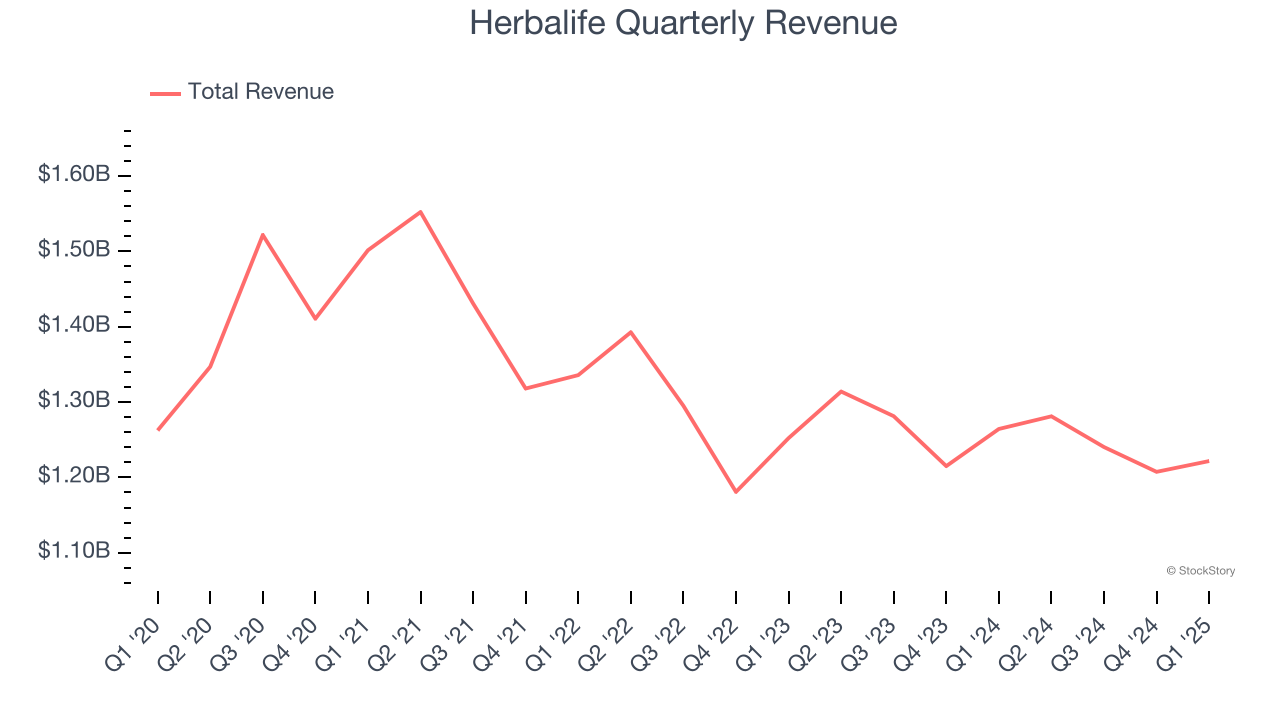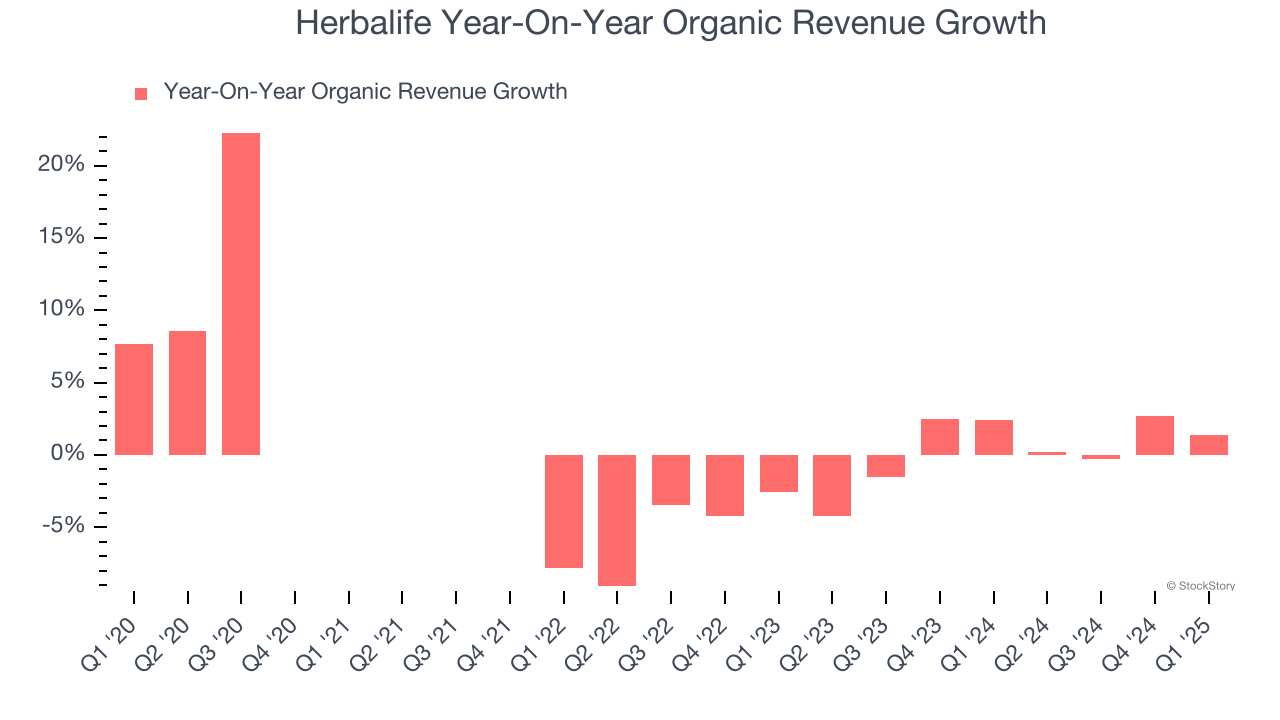
Health and wellness products company Herbalife (NYSE:HLF) missed Wall Street’s revenue expectations in Q1 CY2025, with sales falling 3.4% year on year to $1.22 billion. Next quarter’s revenue guidance of $1.26 billion underwhelmed, coming in 0.6% below analysts’ estimates. Its non-GAAP profit of $0.59 per share was 44.9% above analysts’ consensus estimates.
Is now the time to buy Herbalife? Find out by accessing our full research report, it’s free.
Herbalife (HLF) Q1 CY2025 Highlights:
- Revenue: $1.22 billion vs analyst estimates of $1.23 billion (3.4% year-on-year decline, 0.5% miss)
- Adjusted EPS: $0.59 vs analyst estimates of $0.41 (44.9% beat)
- Adjusted EBITDA: $192 million vs analyst estimates of $147.2 million (15.7% margin, 30.4% beat)
- Revenue Guidance for Q2 CY2025 is $1.26 billion at the midpoint, below analyst estimates of $1.27 billion
- EBITDA guidance for the full year is $640 million at the midpoint, above analyst estimates of $633.6 million
- Operating Margin: 10.1%, up from 5.7% in the same quarter last year
- Free Cash Flow was -$18.1 million compared to -$19.1 million in the same quarter last year
- Organic Revenue rose 1.4% year on year (2.4% in the same quarter last year)
- Market Capitalization: $716.5 million
“As I transition into the role of CEO, I am committed to honoring Herbalife’s 45-year legacy of empowering our communities through health, wellness and a strong entrepreneurial opportunity," said Stephan Gratziani.
Company Overview
With the first products sold out of the trunk of the founder’s car, Herbalife (NYSE:HLF) today offers a portfolio of shakes, supplements, personal care products, and weight management programs to help customers reach their nutritional and fitness goals.
Sales Growth
Reviewing a company’s long-term sales performance reveals insights into its quality. Any business can put up a good quarter or two, but many enduring ones grow for years.
With $4.95 billion in revenue over the past 12 months, Herbalife carries some recognizable products but is a mid-sized consumer staples company. Its size could bring disadvantages compared to larger competitors benefiting from better brand awareness and economies of scale.
As you can see below, Herbalife’s revenue declined by 4.2% per year over the last three years as consumers bought less of its products.

This quarter, Herbalife missed Wall Street’s estimates and reported a rather uninspiring 3.4% year-on-year revenue decline, generating $1.22 billion of revenue. Company management is currently guiding for a 1.5% year-on-year decline in sales next quarter.
Looking further ahead, sell-side analysts expect revenue to grow 1.7% over the next 12 months. While this projection indicates its newer products will spur better top-line performance, it is still below the sector average.
Software is eating the world and there is virtually no industry left that has been untouched by it. That drives increasing demand for tools helping software developers do their jobs, whether it be monitoring critical cloud infrastructure, integrating audio and video functionality, or ensuring smooth content streaming. Click here to access a free report on our 3 favorite stocks to play this generational megatrend.
Organic Revenue Growth
When analyzing revenue growth, we care most about organic revenue growth. This metric captures a business’s performance excluding one-time events such as mergers, acquisitions, and divestitures as well as foreign currency fluctuations.
The demand for Herbalife’s products has barely risen over the last eight quarters. On average, the company’s organic sales have been flat. 
In the latest quarter, Herbalife’s organic sales rose by 1.4% year on year. This growth was an acceleration from its historical levels, which is always an encouraging sign.
Key Takeaways from Herbalife’s Q1 Results
We liked how Herbalife beat analysts’ EBITDA and EPS expectations this quarter. On the other hand, its EBITDA guidance for next quarter missed and its organic revenue fell short of Wall Street’s estimates. Overall, this quarter was mixed but still had some key positives. The market seemed to focus on the negatives, and the stock traded down 1.7% to $7.06 immediately after reporting.
Big picture, is Herbalife a buy here and now? When making that decision, it’s important to consider its valuation, business qualities, as well as what has happened in the latest quarter. We cover that in our actionable full research report which you can read here, it’s free.
